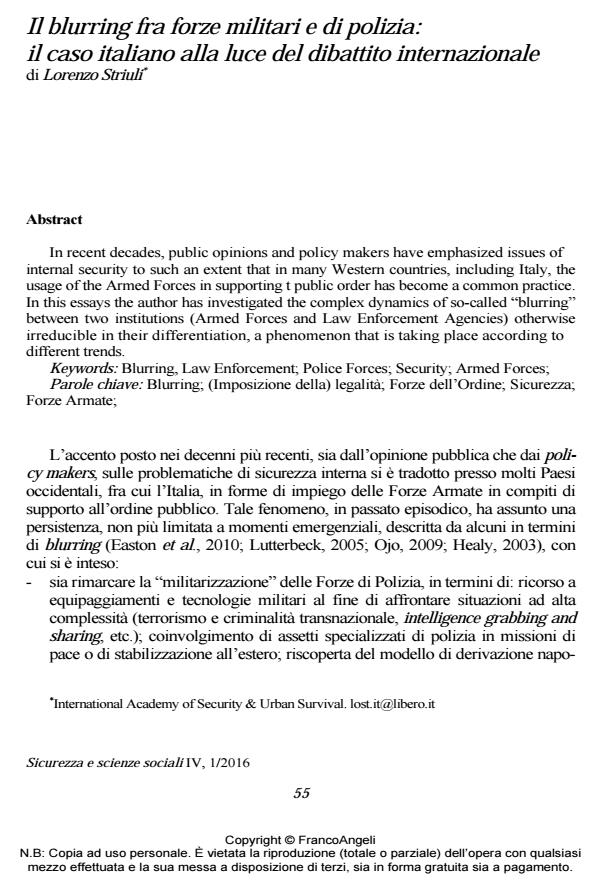Il blurring fra forze militari e di polizia: il caso italiano alla luce del dibattito internazionale
Titolo Rivista SICUREZZA E SCIENZE SOCIALI
Autori/Curatori Lorenzo Striuli
Anno di pubblicazione 2016 Fascicolo 2016/1
Lingua Italiano Numero pagine 17 P. 55-71 Dimensione file 257 KB
DOI 10.3280/SISS2016-001005
Il DOI è il codice a barre della proprietà intellettuale: per saperne di più
clicca qui
Qui sotto puoi vedere in anteprima la prima pagina di questo articolo.
Se questo articolo ti interessa, lo puoi acquistare (e scaricare in formato pdf) seguendo le facili indicazioni per acquistare il download credit. Acquista Download Credits per scaricare questo Articolo in formato PDF

FrancoAngeli è membro della Publishers International Linking Association, Inc (PILA)associazione indipendente e non profit per facilitare (attraverso i servizi tecnologici implementati da CrossRef.org) l’accesso degli studiosi ai contenuti digitali nelle pubblicazioni professionali e scientifiche
In recent decades, public opinions and policy makers have emphasized issues of internal security to such an extent that in many Western countries, including Italy, the usage of the Armed Forces in supporting t public order has become a common practice. In this essays the author has investigated the complex dynamics of so-called "blurring" between two institutions (Armed Forces and Law Enforcement Agencies) otherwise irreducible in their differentiation, a phenomenon that is taking place according to different trends.
Parole chiave:Blurring; (Imposizione della) legalità; Forze dell’Ordine; Sicurezza; Forze Armate
- The Impact of Military Policing on Armed Forces: The Case of Italy Matteo Mazziotti di Celso, in Armed Forces & Society /2025 pp.690
DOI: 10.1177/0095327X231225771 - Legitimating Violence: Military Operations Within Brazilian Borders David P. Succi Junior, pp.13 (ISBN:978-3-031-95213-5)
Lorenzo Striuli, Il blurring fra forze militari e di polizia: il caso italiano alla luce del dibattito internazionale in "SICUREZZA E SCIENZE SOCIALI" 1/2016, pp 55-71, DOI: 10.3280/SISS2016-001005